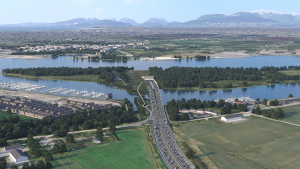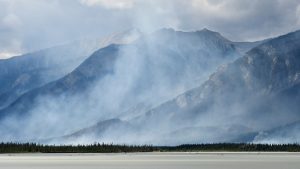Change is key for northern B.C. as shifting demographics and economic forces compel the need to innovate.
Joel McKay, CEO of Northern Development, presented some of the short and long-term trends he is seeing in the region. Northern Development is a regional development corporation focused on stimulating economic growth in B.C.’s north.
McKay addressed attendees during the BC Economic Development Association’s annual Economic Summit.
Prior to the pandemic, the corporation was already seeing significant difficulties in the forestry sector. And once social distancing and travel restrictions were in place, the pandemic mostly hurt the hospitality and service sectors.
“The north has done relatively better than other parts of B.C. because our economy is less reliant on hospitality and service and we have major industrial projects like LNG Canada and Coastal GasLink offsetting things.”
However, McKay explained while major industrial projects are still moving ahead and delivering major economic benefits, employment in the sector has shrunk.
“The resource industries were the first to automate, mechanize and adopt technology,” said McKay. “That means they have become extraordinarily efficient. They have increased volume but with fewer people.”
The north is also seeing demographics change. Many of its areas are becoming older and also a smaller portion of the B.C. population.
In 1997, 32 per cent of B.C. residents called the north home. In 2016 that had shrunk to 26 per cent. However, McKay noted B.C.’s overall population has increased significantly since the 1990s, especially in Metro Vancouver and on Vancouver Island.
McKay also noted the region will see its population of people 19 years and younger shrink. Areas in the north will see populations of people 64 and older rise from 22 per cent of the population to 30 per cent in the coming decades.
To attract younger people and families to the region, efforts must be made to provide schools, hospitals and other community-building infrastructure.
“It is still incredibly important that we are welcoming and supportive to heavy industry,” said McKay. “That is where our first dollars are coming and first jobs, but there also needs to be a focus on how we can get value in the long term.”
McKay said these are conversations that need to be had when large projects are asking groups like Northern Development what they can do to improve the communities they work in.
“When we engage these companies that is the conversations they are having,” said McKay. “If you are Gen X or a Millennial, where you choose to live will depend on education and health care service delivery in a community.”
Follow the author on Twitter @RussellReports.










Recent Comments
comments for this post are closed